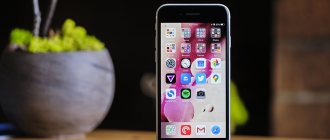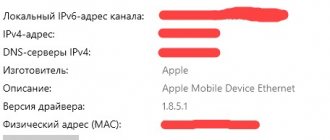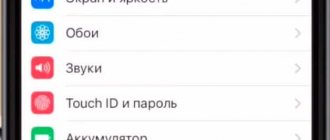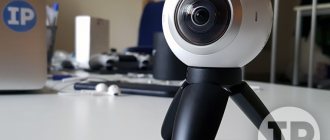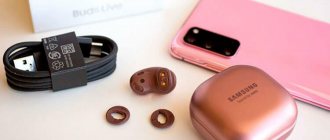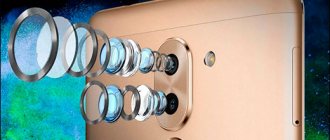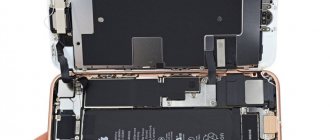Experts called the updated iPhone 8 and the superior iPhone 8 Plus model advanced camera phones. Users agree – the new smartphone features help take rich, atmospheric pictures. The effect is achieved not just with the help of filters and the “Portrait” mode; the camera itself on smartphones has become different, as if created anew. Although the models belong to the same generation of Apple smartphones, the characteristics of the shooting equipment differ. Previous Apple smartphones cannot be compared with the new model, but it’s definitely worth discussing the differences between the 8 and 8 Plus.
What kind of camera does the iPhone 8 have?
The iPhone 8 camera pleases users with updated color reproduction. At first glance, nothing has changed since the iPhone 7. Apple developers took the creation of a camera for Apple devices seriously. Users write that the device has learned what users of the seventh iPhone wanted, including well-developed image stabilization and smooth focusing. This is important, because you buy a smartphone along with Apple’s “trick” – the HD FaceTime camera. Achieving the look of a professional photo takes work, so the benefits of an updated camera cannot be underestimated.
The camera software has also received a number of changes. Photos are now processed faster with support from the A11 Bionic processor, with better pixel recognition and HDR mode by default for a wider color range. It is worth noting the high-quality video shooting mode in 4K and Slow-motion; the camera successfully copes with photos and videos even in difficult lighting. The kit includes an impressive set of settings and filters, which also has a positive effect on the images. The main thing to pay attention to is the iPhone 8's camera specs - an impressive list.
Main characteristics
Before buying a smartphone, users are interested in what kind of camera the iPhone 8 has. Just like in the seventh model, the rear camera of the iPhone 8 received a 12-megapixel matrix, and the front one - 7. The shooting unit was completely redesigned, the perception of color, shadows and halftones changed. Saturation, brightness and contrast have changed, blur has become “smart”, and stabilization has become clear. The updated camera has learned to highlight contours and focus on objects in focus, but what is most striking is the durable lens coating, which is not afraid of scratches. Other characteristics:
- apertures ƒ/1.8 and ƒ/2.2;
- only one camera;
- digital 5x zoom;
- optical image stabilization;
- lens with six lenses;
- updated True Tone QuadLED flash with Slow Sync function;
- panorama shooting with a resolution of up to 63 megapixels;
- The lens is protected by a sapphire coating;
- BSI sensor;
- hybrid IR filters;
- Focus Pixels technology with autofocus;
- one-touch focusing;
- Live Photos image stabilization;
- increased range of shades for photos and Live Photos;
- updated operating principle of local tone mapping;
- exposure control;
- activation of HDR when taking photographs;
- preset photo stabilization;
- shooting photos in a series;
- timer;
- linking images to geographic location;
- HEIF and JPEG photo formats.
Camera overview
The iPhone 7's camera was no better than popular, less expensive competitors. Photography iPhone 8 sets new standards for amateur photography. The camera of the eighth generation iPhone was called the best in the global smartphone market. Experts say that the finished images from the camera of the new iPhone leave behind its closest competitors - Google Pixel and HTC U11. The color reproduction was called “honest,” although the camera’s night mode lacks manual control – the iPhone is used to relying on the technical “stuffing” of the device, so there are frankly few settings for taking photos at night.
But in bright sunlight, the pictures do not turn yellow, and no additional correction with filters is needed. Users note that the photographs come out natural – the way human eyes see the world. The quality of selfies is not inferior to the rear camera; True Tone technology adjusts the temperature of the image relative to external light and the surrounding world. This will reduce the amount of blue tone when using the camera indoors and in low light conditions. The cameras have virtually no exposure errors, the background will not be overexposed, and the white balance will be as close to natural as possible.
Sample photos
Photos taken on iPhone 8 are distinguished by high-speed image processing. The camera independently selects the desired temperature and shooting mode. Users have access to manual settings if the default image is not satisfactory. The main difference is image stabilization and dynamic color range correction, even on the go. In good weather you won’t be able to take an ugly photo, but the rest of the time you’ll have to try. The camera improvements are most noticeable in photos of foliage, flowers, and macro subjects. There has been an improvement in the work of the “bright colors” function; images on iPhone 8 are rich and reflect the palette of shades of the surrounding world.
Photo: Superg.ru
Photo: Damha Urbanizadora
interesting
Names and sizes of all four iPhone 12 models confirmed
Distributors will receive iPhone 12 next week
Photo: Apple.com
It can also be seen that the amount of noise in the room has decreased. It is not yet possible to completely get rid of this shortcoming, but now the problem does not attract obvious attention. Shooting video in 4K has also been redesigned - now the picture quality is at FullHD level, and FPS has increased to 60. When shooting in this way, the quality of stabilization decreases, and slow-motion video is recorded in fits and starts. Users have already noted these shortcomings; in the new generations of Apple smartphones, we can hope for the bugs to be corrected.
iPhone 8 plus camera
The built-in camera of the iPhone 8 Plus does not surpass the technical characteristics of its “younger brother”. But “eight Plus” would not be an improved version of the iPhone 8 without innovations - the smartphone camera received two lenses at once. The increased visibility had a positive effect on the quality of photographs; the additional rear camera made it possible to focus even on distant objects. The improvements look insignificant, but in fact you can see the difference with the naked eye. Apple is moving in the right direction, improving the quality of shooting in new generations of smartphones. The number of lenses and cameras changes, but the beauty of the photographs remains at its best.
Another innovation that bypassed the 8 model, but appeared in the iPhone 8 plus, is portrait mode. The company presented five effects at once:
- natural lighting with a blurred background;
- stage lighting on a black background;
- stage lighting in black and white;
- studio lighting in focus;
- halftone contour lighting.
Otherwise, there are no significant camera differences between 8 and 8 Plus, but the older model works better with complex textures and detail. If this feature is important to the buyer, then it is worth choosing 8 plus.
Comparison of iPhone 8 and iPhone 7 Plus displays
iPhone 8 - bright display
The display of a modern smartphone should be large and comfortable. If the sun is shining, then there should be no glare, and in the dark there should be adaptation to intensity and color.
Comparison of iPhone 8 and iPhone 7 Plus displays:
- iPhone 7 Plus display is similar to the Apple Six - 5.5 and 4.7 LCD display with a resolution of 1920 x 1080. Pixel density - 401 per inch.
- The iPhone 8 Plus has a 5.5-inch Retina HD display . The resolution is the same as the previous model 1920 x 1080. The color contrast ratio is also identical at 1300:1.
- It is worth noting support for 3D Touch, Wide Color (P3) and good brightness of 625 cd/m2 . The main difference of this model is the True Tone function, which allows the device to instantly adapt color and intensity in accordance with the color temperature of the light.
Owners of the new iPhone 8 will be more comfortable with their smartphone, no matter where they are. In the dark, the display will be brighter and warmer, in the light of the sun it will be cold and bluish.
Main characteristics
The technical characteristics of the rear camera of the 8 Plus are identical to the one received by the iPhone 8, and the front camera is completely the same. Full list of iPhone 8 Plus camera specifications:
- dual camera 12 megapixels;
- wide-angle lens with ƒ/1.8 aperture;
- telephoto lens with ƒ/2.8 aperture;
- optical 10x digital zoom;
- work in portrait mode;
- portrait lighting filters;
- photo stabilization;
- six objective lenses;
- True Tone Quad LED flash;
- shooting in Panorama mode
- sapphire crystal to protect the lens;
- BSI sensor;
- hybrid IR filter;
- preset focus;
- press focus;
- stabilized Live Photos;
- expansion of color ranges for images;
- updated tone mapping;
- exposure leveling;
- HDR mode operation;
- photo stabilization configured by default;
- burst mode;
- timer setting function;
- linking geodata to photographs;
- support for HEIF and JPEG formats.
The lens itself has received improvements, which have been adjusted to improve performance in portrait mode. The updated portrait lighting works more stable than on iPhone 7. Users appreciated the convenience of portrait mode - effects are easy to add and remove from images.
Comparison of dimensions of iPhone 8 and iPhone 7 Plus
iPhone 8 - powerful dimensions
The change in dimensions is insignificant. The difference is almost not felt, although the new smartphone is a little more massive.
Comparison of dimensions of iPhone 8 and iPhone 7 Plus:
- iPhone 8 - dimensions: 67.3×138.4×7.3 mm; weight: 154 grams.
- iPhone 8 Plus - dimensions: 78.1×158.3×7.5 mm; weight: 202 grams.
- iPhone 7 - dimensions: 67.1×138.3×7.1 mm; weight: 138 grams.
- iPhone 7 Plus - dimensions: 77.1x158x7.3 mm; weight: 188 grams.
As you can see, the “eight +” is heavier, wider and higher. The discrepancy in performance is minimal, and the difference will only be felt when using accessories.
Camera overview
The disadvantages of the camera on the iPhone 8 Plus include stabilization, which is only present on a wide-format lens. Experts note the strangeness of this solution - it would be more reasonable to install stabilization on a telephoto lens due to the increased sensitivity to camera shake. There are also positive aspects - the updated matrix works with “deep pixels”, which increases the energy efficiency class. There are improved color filters inside the camera, but users find that the subtle color reproduction is achieved with the help of well-designed shooting software.
People involved in photo processing using a computer shared their impressions - the iPhone 8 Plus camera captures more details, correctly highlights accents, but in low light noise appears in the photo. But compared to the previous generation of Apple products, the iPhone 8 plus has made a big step towards improving the quality of photos. Even Apple's opponents were jealous of the G8's new dual camera. The owners of the device believe that the breakthrough in the field of photographing has benefited both the phones and the company itself. As a bonus, the protruding lens made the design of the smartphone more interesting, reducing the similarity of the smartphone with the previous “seven”.
iPhone 8 - left, iPhone 8 Plus - right
Price comparison of iPhone 8 and iPhone 7 Plus
iPhone 8
Price is the most interesting thing in planning a purchase. After all, you want to buy a new modern device and save money. The price of a smartphone depends on the number of gigabytes of memory.
Price comparison of iPhone 8 and iPhone 7 Plus:
- iPhone 8 Plus costs 65,000 - 70,000 rubles (64 GB) and 77,000 - 80,000 rubles (256 GB).
- iPhone 7 Plus costs from 43,000 to 55,000 rubles.
Naturally, the price will depend on the store. It will be cheaper to purchase a new device online than in a brick-and-mortar store. In a large chain, this flagship has a lower cost than in a small retail outlet of an individual entrepreneur. Therefore, choose, ask the price and save.
Comparison of iPhone 8 and 8 Plus cameras
In the light of artificial lamps, the difference between 8 and 8 Plus cannot be seen; the cameras behave identically in high light conditions. The only difference is that the 8 plus has a wider camera angle than the 8 model. In conditions of lack of light, the older device performs better; even at night, more details are captured. There is no point in comparing the cameras of representatives of the eighth generation of iPhones - the dual lens 8 plus will always be one step ahead. If the quality of the image plays an important role, then the choice is definitely in favor of the iPhone 8 plus - an excellent camera with a lot of settings and filters.
Compare phones - select a smartphone model
Comparison - Apple iPhone 7 Plus vs Apple iPhone 8 Plus
Apple iPhone 7 Plus smartphone from 2020, weighing 188 g and measuring 158.2 x 77.9 x 7.3 mm.
It is equipped with a 5.5 inch screen, 12 megapixel camera and 32/128/256 GB memory, 3 GB RAM. Its processor is Quad-core 2.34 GHz (2x Hurricane + 2x Zephyr) Apple iPhone 8 Plus smartphone from 2020, weighing 202 g and measuring 158.4 x 78.1 x 7.5 mm. It is equipped with a 5.5 inch screen, 12 megapixel camera and 64/256 GB memory, 3 GB RAM. Its processor is Hexa-core (2x Monsoon + 4x Mistral)
For a complete comparison of all features, view the table below.
or
| General characteristics | |||
| release date | 2016, September | 2017, September | |
| Dimensions (H x W x D) | 158.2 X 77.9 X 7.3 mm | 158.4 X 78.1 X 7.5 mm | |
| Weight | 188 | 202 | |
| Frame | Glass front panel, body | Front and back panels made of glass, aluminum frame | |
| Colors | Jet Black, Black, Silver, Gold, Rose Gold, Red | Gold, Space Gray, Silver, Red | |
| Battery | 2900 mAh, Non-removable, Li-Ion | 2691 mAh, Non-removable, Li-Ion | |
| Battery life | Standby time - Up to 384 hours (3G) Talk time - Up to 21 hours (3G) Audio playback - Up to 60 hours | Talk time - Up to 21 hours (3G) Audio playback - Up to 60 hours | |
| approximate price | 690 EUR | 770 EUR | |
| Performance and components | |||
| Operating system (OS) | iOS 10.0.1, updated to iOS 12.1.3 | iOS 11, updated to iOS 12.1.3 | |
| Chipset | — Apple A10 Fusion (16 nm) | — Apple A11 Bionic (10 nm) | |
| Processor CPU | — 4 core 2.34 GHz (2x Hurricane + 2x Zephyr) | — 6 nuclear (2x Monsoon + 4x Mistral) | |
| Video processor GPU | - PowerVR Series7XT Plus (six-core graphics) | - Apple GPU (three-core graphics) | |
| External memory | No | No | |
| Inner memory | 32/128/256 GB, 3 GB RAM | 64/256 GB, 3 GB RAM | |
| Antutu 8 | 239508 | 305167 | |
| Antutu 7 | 181234 | 232145 | |
| GeekBench 4 Single Core | 3441 | 4224 | |
| GeekBench 4 Multi-Core | 5797 | 10193 | |
| GeekBench 4 Battery | 2329 | 2842 | |
| Screen | |||
| Technology | LED-backlit IPS LCD | LED-backlit IPS LCD | |
| Touchscreen | yes, capacitive | yes, capacitive | |
| Number of colors | 16M | 16M | |
| Size (Diagonal) | 5.5″ (inches) | 5.5″ (inches) | |
| Screen area | 83.4 cm2 | 83.4 cm2 | |
| Aspect Ratio | 16:9 (Height:Width) | 16:9 (Height:Width) | |
| Screen/body ratio | 67.7% | 67.4% | |
| Resolution (pixels) | 1080 x 1920 px | 1080 x 1920 px | |
| Pixel Density | 401 PPI | 401 PPI | |
| Screen protection | Ion-strengthened glass, oleophobic coating | Ion-strengthened glass, oleophobic coating | |
| Other options | — Wide color gamut -3D Touch display & home button | — Wide color gamut -3D Touch display & home button -True-tone | |
| Camera and video | |||
| Rear camera, basic | 12 MP, Dual camera | 12 MP, Dual camera | |
| Camera Specifications | -12 MP, f/1.8, 28mm (wide-angle), 1/3", OIS, PDAF -12 MP, f/2.8, 56mm (telephoto), 1/3.6", 2x optical zoom, AF | -12 MP, f/1.8, 28mm (wide-angle), OIS, PDAF -12 MP, f/2.8, 57mm (telephoto), 2x optical zoom, PDAF | |
| Functions | quad LED dual tone flash, HDR | quad LED dual tone flash, HDR | |
| Video | [email protected] , [email protected] /60/120fps, [email protected] | [email protected] /30/60fps, [email protected] /60/120/240fps | |
| DxOMark Main Score | 88 | 94 | |
| DxOMark Photo | 90 | 96 | |
| DxOMark Video | 84 | 89 | |
| Front camera, selfie | 7 MP, Single camera | 7 MP, Single camera | |
| Specifications | -7 MP, f/2.2, 32mm (standard) | -7 MP, f/2.2, 32mm (standard) | |
| Functions | Face detection, HDR | Face detection, HDR | |
| Video | [email protected] | [email protected] | |
| Communications and connections | |||
| SIM cards | Nano-SIM | Nano-SIM | |
| Communication standard | GSM/CDMA/HSPA/EVDO/LTE | GSM/HSPA/LTE | |
| Show all network frequencies: | |||
| Frequencies | -2G - GSM 850 / 900 / 1800 / 1900 - A1661, A1784 CDMA 800 / 1900 / 2100 - A1661 -3G - HSDPA 850 / 900 / 1700(AWS) / 1900 / 2100 - A1661, A1784 CDMA2000 1xEV- DO&TD- SCDMA - A1661 -4G - LTE band 1(2100), 2(1900), 3(1800), 4(1700/2100), 5(850), 7(2600), 8(900), 12(700), 13(700), 17(700), 18(800), 19(800), 20(800), 25(1900), 26(850), 27(800), 28(700), 29(700), 30(2300), 38(2600), 39(1900), 40(2300), 41(2500) - A1661, A1784 | -2G - GSM 850 / 900 / 1800 / 1900 -3G - HSDPA 850 / 900 / 1700(AWS) / 1900 / 2100 -4G - LTE band 1(2100), 2(1900), 3(1800), 4(1700) /2100), 5(850), 7(2600), 8(900), 12(700), 13(700), 17(700), 18(800), 19(800), 20(800), 25 (1900), 26(850), 28(700), 29(700), 30(2300), 34(2000), 38(2600), 39(1900), 40(2300), 41(2500), 66 (1700/2100) | |
| Speed | HSPA 42.2/5.76 Mbps, LTE-A (3CA) Cat9 450/50 Mbps, EV-DO Rev.A 3.1 Mbps | HSPA 42.2/5.76 Mbps, LTE-A (3CA) Cat12 600/150 Mbps, EV-DO Rev.A 3.1 Mbps | |
| GPRS | Yes | Yes | |
| Edge | Yes | Yes | |
| WiFi | Wi-Fi 802.11 a/b/g/n/ac, dual-band, hotspot | Wi-Fi 802.11 a/b/g/n/ac, dual-band, hotspot | |
| GPS | Yes, with A-GPS, GLONASS, GALILEO, QZSS | Yes, with A-GPS, GLONASS, GALILEO, QZSS | |
| NFC | Yes | Yes | |
| USB | 2.0, proprietary reversible connector | 2.0, proprietary reversible connector | |
| Bluetooth | 4.2, A2DP, LE | 5.0, A2DP, LE | |
| Harmful radiation | SAR - 1.19 W/kg (head) 1.19 W/kg (body) SAR EU - 1.24 W/kg (head) 1.00 W/kg (body) | SAR — 1.19 W/kg (head) 1.19 W/kg (body) SAR EU — 0.99 W/kg (head) 0.99 W/kg (body) | |
| Music and audio | |||
| Radio | No | No | |
| 3.5mm audio jack | No | No | |
| Another | — Active noise cancellation with dedicated microphone — Stereo speakers | — Active noise cancellation with dedicated microphone — Stereo speakers | |
| Other Features | |||
| Sensors | — Fingerprint scanner (front-mounted), accelerometer, gyro, proximity sensor, compass, barometer | — Fingerprint scanner (front-mounted), accelerometer, gyro, proximity sensor, compass, barometer | |
| Other Addons | - Siri natural language commands and dictation - IP67 Protection from water and dust (up to 1m in 30 minutes) -Apple Pay (Visa, MasterCard, AMEX certified) | - Fast battery charging: 50% in 30 minutes -Qi Wireless charging -Siri natural language commands and dictation - IP67 Water and dust protection (up to 1m in 30 minutes) -Apple Pay (Visa, MasterCard, AMEX certified) | |
| Versions | — Versions: A1864 (USA, Hong Kong, Australia, New Zealand, China) A1897 (EMEA, UAE, LATAM, Canada, USA AT&T/T-Mobile, Singapore); A1898 (Japan) | ||
Share Share
